Asian Hornet
The Asian Hornet
By Gerry Stuart
As we progress through these troubled times it may be easy to loose focus on other issues which can be as equally important to us and our delicate environment.
Someone once said:
‘If the bee disappeared off the face of the earth, mankind would only have 4 years left to live.’ A quote often connected by some with Albert Einstein. We often hear news of the plight of our beloved honey bee from colony losses from the UK and different parts of the world, not to mention the impact that has to the economy.
There are places in China where people are employed to pollinate fruit with chicken feathers on bamboo canes due to the apparent disappearance of pollinators, coincidentally from the same region that the Asian hornet reportedly comes from .
Could there be a correlation? Probably time will tell.

Asian hornets we are told are a threat to all pollinators not just honey bees.
The Asian hornet (Vespa velutina) is native to Asia. It is believed that it was accidentally imported into Southern France from China around 2004 and has spread rapidly through France and into neighbouring countries and most recently the Channel Islands.
Members from different branches in Devon have formed Asian Hornet Action Teams (AHATs) and are now responding once again to help stem the incursion threat.
Devon branches will be joining with similar AHAT teams throughout the UK for another National Asian Hornet Watch Week running from September 7th – 13th 2020.
AHAT’s are encouraging all beekeepers and members of the public to be on the alert for Asian hornets until the end of October. Ivy which will be coming into flower over the next few weeks, or fallen fruit makes for an excellent place to look out for them either in your garden or elsewhere.
The public should be aware that whilst the Asian hornets are not ordinarily aggressive, they are advised that they should not under any circumstances approach a nest. If they are disturbed, they will actively defend their nests.
Generally nests are found high in trees but they are now starting to be found low down in garden shrubs, undergrowth, and roadside banks. Bee Inspectors found one in a shrub outside a dining room window of a house.
We need to spread the word and get the public behind us. We need them to be ‘our eyes and our ears’. Yes ‘ears as well’ if they should hear of a report then it should be passed on, AHATs’ would rather get the report than the report be forgotten.
Members of the public can download the free Asian Hornet Watch App on their smartphone to assist with identification and quick and easy submission of any reports.
You can make a difference!
How can you help?
- Spread the word.
- Get to know what it looks like.
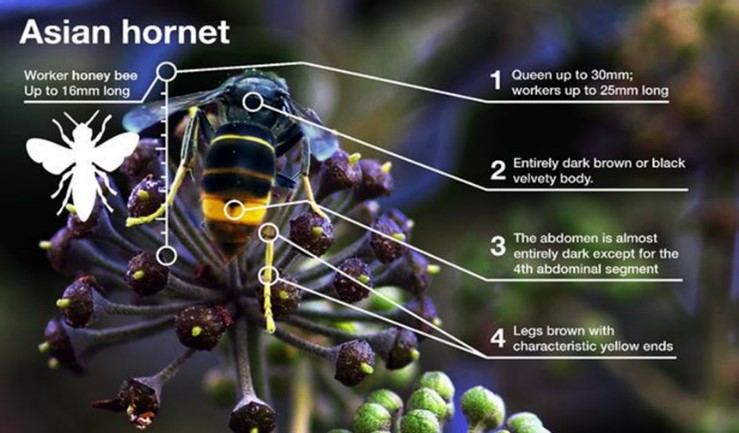
- Know what it is not.
- Offer to help your local ‘Action team.’
What to look for:
Spring: Primary nest

Late spring early summer: Primary nest or the start of a secondary nest.
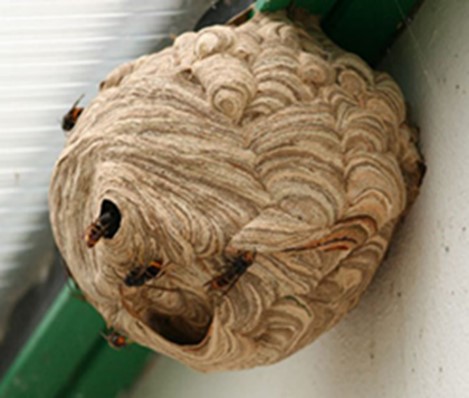
Mid to late summer: Secondary nest.

Winter: Secondary nest may contain a few overwintering Queens.
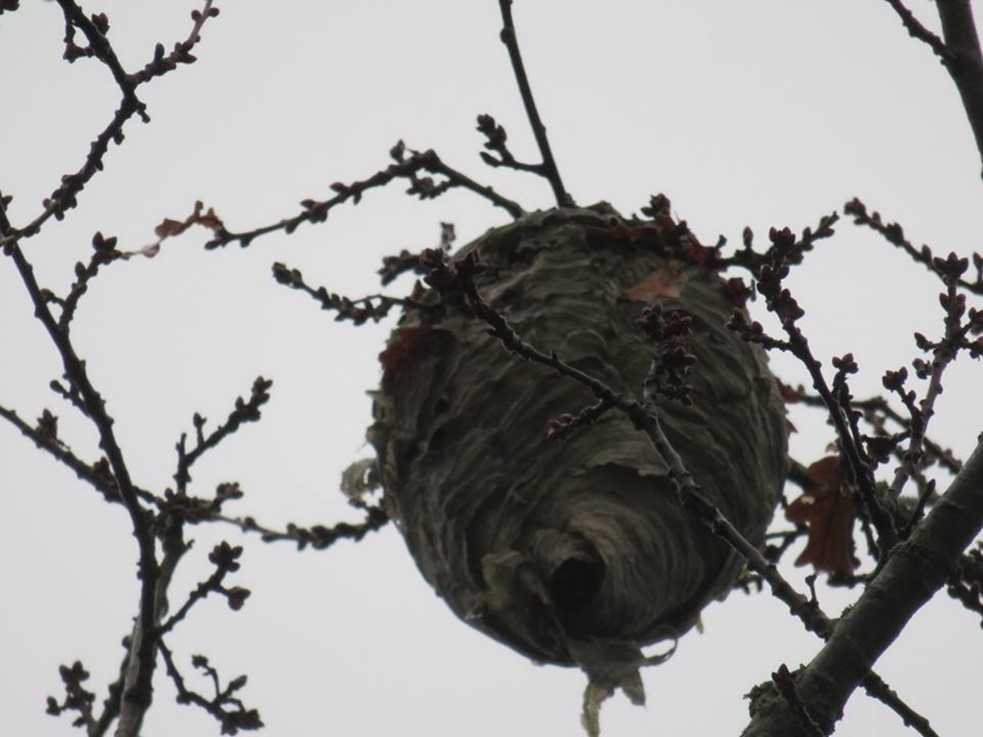
What action will the AHAT take upon receipt of a report?
- Visit location and speak to the informant.
- Collect any evidence that they may have.
- Log relevant details.
- If no exhibit, then show insect identification cards to confirm species seen.
- Set up a bait station or trap.
- Photograph / capture for submission to N.B.U.
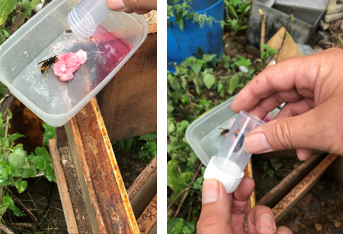
- Notify local Police / Council if there is a risk to public safety to have the area cordoned off.
- Upon arrival of N.B.U., brief on action taken.
AHAT’s need your help as they prepare for Action against the Asian Hornet
Simon O’Sullivan Chairman of Devon AHAT said: “We continue to strive towards a ‘co-ordinated partnership approach’ with our Bee Inspectors from the National Bee Unit to assist with this incursion. We need the public to be aware of what this insect looks like, and to understand the potential damage that this insect can cause to all of our native pollinators not just honey bees but butterflies, bumble bees, hoverflies and other essential pollinators.”
The Asian Hornet Watch week will run from the 7th to 13th September, 2020 and AHAT members are asking the public to be attentive and to report any sightings.
If you See it, Snap it, Send it to:
by email at alertnonnative@ceh.ac.uk or online at https://www.brc.ac.uk/risc/alert.php?species=asian_hornet BUT remember no action will be taken unless there is photographic or physical evidence!
For more information on line go to the Non-Native Species Secretariat (NNSS) http://www.nonnativespecies.org/alerts/asianhornet or alternatively contact your local beekeeping association swarm liaison co-ordinator or swarm collector.
There is an Asian Hornet Watch App which will help you report a sighting.
available at: https://play.google.com/store/apps/details?id=uk.ac.ceh.hornets&hl=en_GB and https://apps.apple.com/gb/app/asian-hornet-watch/id1161238813
You can contact your nearest AHAT by using the interactive map at https://www.bbka.org.uk/asian-hornet-action-team-map and they will be pleased to help if you are unsure of your identification
If possible, take a photo or video and send it with any collected specimens to the NNSS.


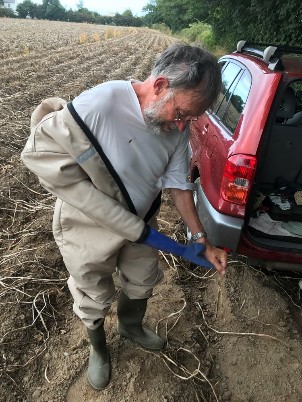
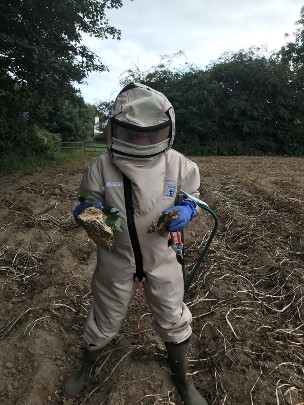



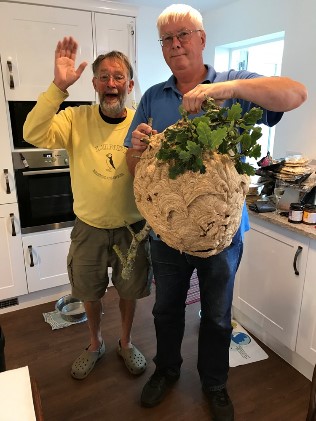
Photos by Gerry Stuart
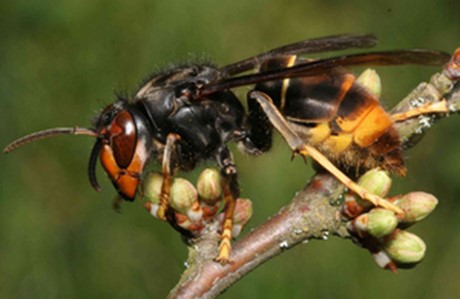
Photo from NBU




